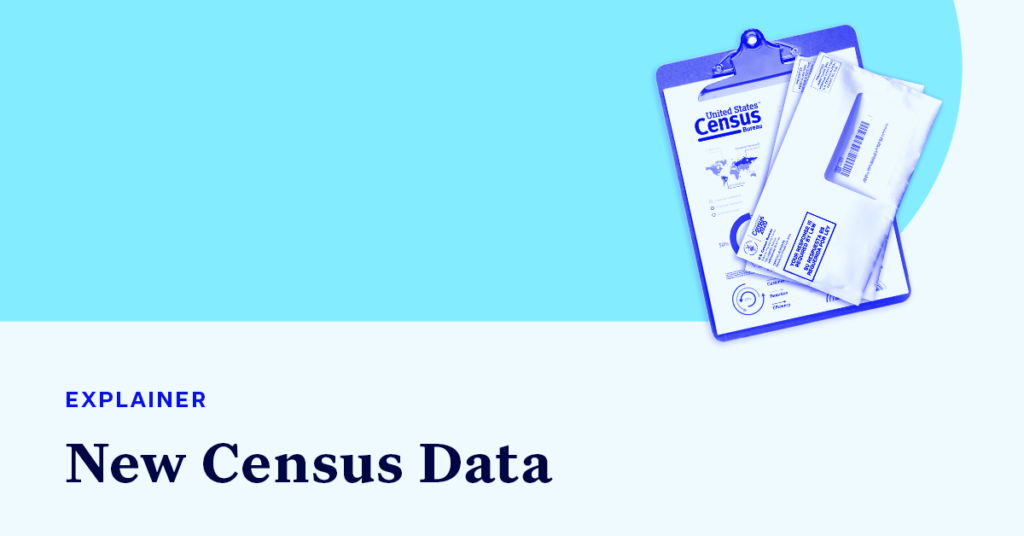What Does the New Census Data Mean for Voting Rights?

Soon, the U.S. Census Bureau will release its detailed results from the 2020 census. The long-awaited data will have huge ramifications for redistricting, voting rights and currently pending court cases — so today, we’re answering your questions about this data and what you should look out for in your state.
I thought the census data was already released?
In the spring, the Census Bureau published its state-level data. This release included the country’s total population growth over the last 10 years and which states saw the most relative growth or loss of their population. This information is hugely important: it resulted in the reapportionment of seats for states in the U.S. House of Representatives. There were seven seat changes in the House, with Texas gaining two seats and Colorado, Florida, Montana, North Carolina and Oregon each gaining one. Conversely, California, Illinois, Michigan, New York, Ohio, Pennsylvania and West Virginia each lost a seat.
This state-level data determines how many seats each state gets — but more detailed information is needed to decide how the districts that elect representatives to those seats are drawn. For redistricting to begin, states need the information that the Census Bureau is releasing this month: population amounts for cities, towns and counties, as well as demographic information about who lives within the state and where. Race, sex, ethnicity and age data will all be included in this upcoming release. Once states know this information, they can determine where eligible voters live, how they are distributed across the state and where district lines should be drawn to fairly represent these voters in government.
Why is this data being released so late in the year?
Perhaps this answer is what you expected: the Trump administration made a bad situation worse. The barriers the Census Bureau faced in its data collection efforts in 2020 were unprecedented, even without interference from the Trump administration, and the pandemic made door-to-door canvassing difficult, unsafe and slow. But the Trump administration also pushed their partisan agenda on the Bureau’s efforts from the start, attempting to have a citizenship question included on the questionnaire and proposing that undocumented immigrants not be counted. Then, in a tactic aimed to undercount populations that are less likely to respond to the census online and early in the survey process, Trump tried to cut the data collection short, despite the Bureau’s stated concern that pandemic restrictions would mandate more time to complete their counting. This back and forth with the Trump administration added another hurdle for the Bureau to overcome in their count.
All in all, census data was delayed by over four months. Initially due to states on March 31, the Bureau will release its demographic-level data in mid-August.
What does the delay mean for redistricting?
In a country with such frequent elections, from primaries to special elections to House cycles every two years, any delay of the redistricting process can be hugely disruptive. The impact of the data delay varies from state to state, but state governments face a much more rushed timeline in which they need to draw and pass new maps and update ballots before their next elections, which could be as soon as this fall.
When will redistricting begin in my state?
Your state will likely begin the redistricting process very soon. Many states, such as New York, Indiana and South Carolina, are already holding public redistricting hearings to discuss how lines will be drawn, take voter feedback and assess any issues that the delay in data might pose. Some redistricting commissions, such as in Idaho and New Jersey, are still appointing their final members who will decide the new maps. And Democrats in some states have already sued to ask courts to intervene to ensure fair maps in states where a legislative consensus is unlikely to be reached.
Each state’s process and who controls it will look different. You can learn more about who is in charge of redistricting where you live and what challenges that present for voting rights with our Explainer, “How the Census Decides Your Congressperson.” Additionally, if you missed our more recent Explainer about the history of redistricting, you can find it here.
What can I do to ensure my state draws fair maps?
There are many Democratic and voting rights groups fighting to ensure that fair maps are drawn all across the country. All On the Line is one, and they’re working on getting grassroots volunteers involved in the process in every state. You can find a volunteer opportunity near you on their website.
The redistricting process can be confusing and difficult to understand — but it has huge ramifications for our democracy. We’ll be keeping you updated on all things redistricting, from walking through the history of the process to explaining how legislators, courts and voters all play a role. So, keep reading, join a volunteer opportunity and hold your elected officials accountable as our democracy takes on its new shape for the next decade.